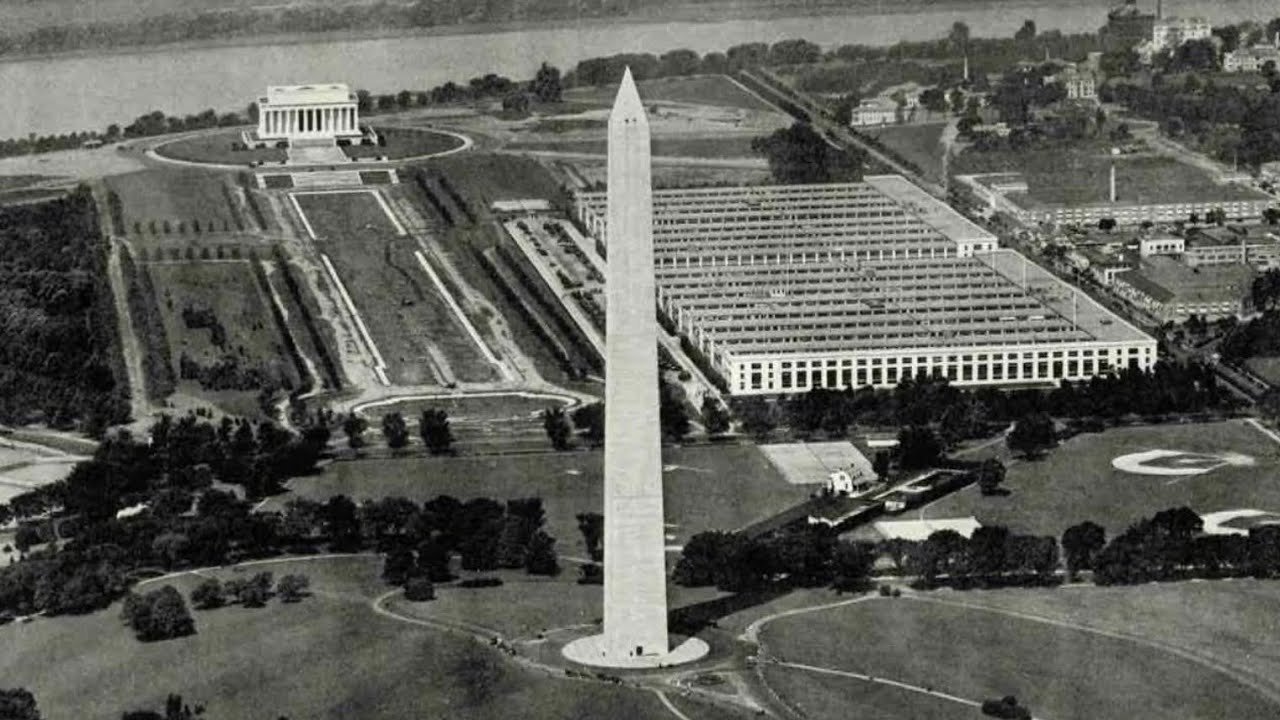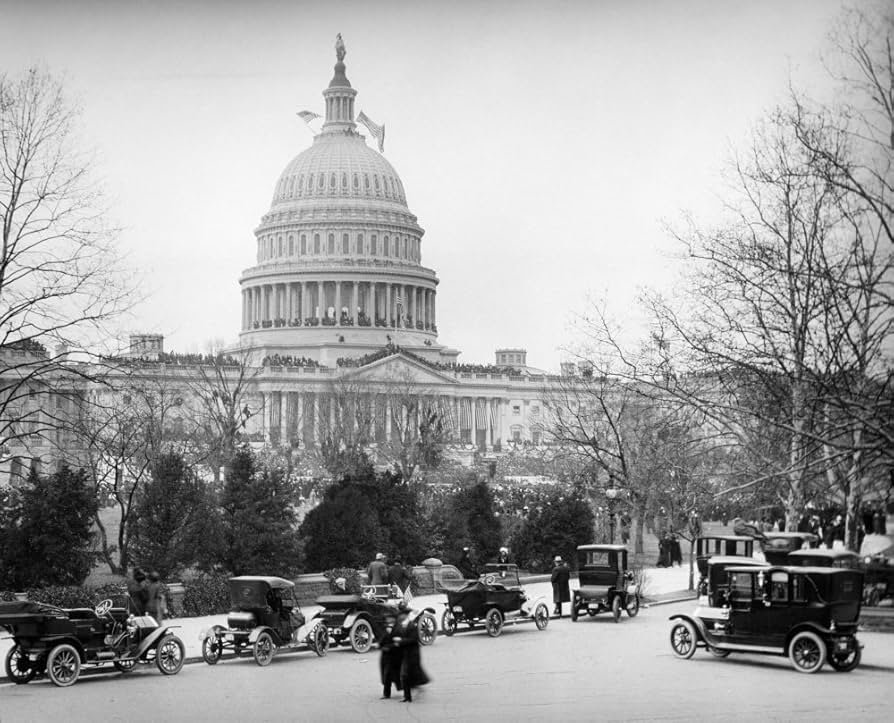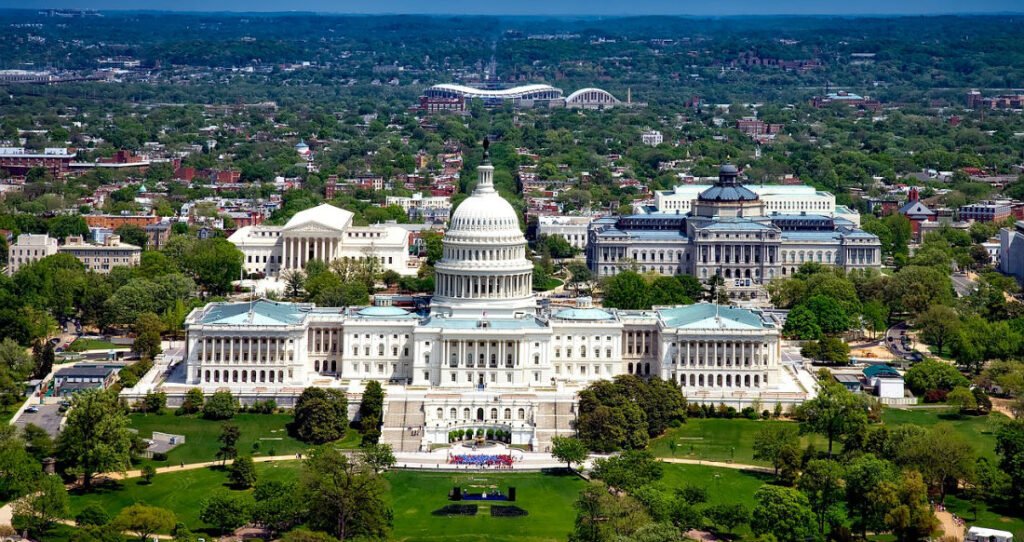Washington D.C. Then and Now
Washington D.C. Then
Washington, D.C., the capital of the United States, has a rich history deeply rooted in the presence of Indigenous peoples before European colonization.
The region was originally inhabited by the Algonquian-speaking Piscataway people, including the Nacotchtank, who settled along the Potomac and Anacostia Rivers.
These tribes thrived through fishing, agriculture, and trade, with the Nacotchtank establishing prominent settlements near the Anacostia River.
However, the arrival of European colonists in the 17th century brought significant challenges, including conflicts and land dispossession.

As a result, many Piscataway people were displaced, and some relocated to a new settlement near Point of Rocks, Maryland, by 1699.
This history highlights the enduring legacy and struggles of the Indigenous peoples who originally inhabited the area now known as Washington, D.C.
Related Article: Boston Then and Now
Washington D.C. History
Washington, D.C., established as the capital of the United States, embodies a rich history shaped by compromise, vision, and continuous evolution.
The Residence Act of 1790 formalized the decision to create a permanent seat for the federal government, with President George Washington selecting a strategic site along the Potomac River.
This location bridged Northern and Southern states, accommodating economic and political interests while fostering unity in the fledgling nation.
Washington envisioned the capital as a “gateway to the interior,” connecting the frontier territories to the Eastern Seaboard and cementing their allegiance to the new republic.
Related Article: San Francisco Then and Now
The federal district was named the District of Columbia to honor explorer Christopher Columbus, while the city itself was named after President Washington.
French-born engineer Pierre Charles L’Enfant was entrusted with designing the city, while surveyor Andrew Ellicott, aided by Benjamin Banneker, defined the boundaries of the new 100-square-mile territory ceded by Maryland and Virginia.
Construction of key buildings like the Capitol and the White House was underway by 1800 when the government relocated from Philadelphia, but the city remained underdeveloped.
The War of 1812 brought destruction as British forces burned federal buildings, yet reconstruction efforts by 1819 restored Washington’s infrastructure, marking a turning point for the capital’s resilience.
Related Article: Panama City Then and Now
Washington’s growth accelerated in the 19th century despite challenges such as economic instability, epidemics, and delayed infrastructure projects.
The arrival of railroads in the 1830s boosted tourism and transformed the city’s social fabric, with congressional families shaping its community dynamics.
Major construction projects like the Treasury, Patent Office, and Post Office buildings further established Washington as a governmental hub.
During the Civil War, its proximity to the Confederate capital of Richmond and the assassination of President Abraham Lincoln underscored the city’s vulnerability but also its central role in national events.
Related Article: Quito Then and Now

Post-Civil War Washington underwent significant transformation.
The brief period of self-government in the 1870s spurred modernization projects, including paved streets, schools, sewers, and public lighting, though the high costs led to Congress assuming control.
The late 19th century saw Washington emerge as a cultural center, with landmarks like the Washington Monument and the Library of Congress enhancing its character.
The McMillan Commission’s urban planning efforts in the early 20th century further beautified the city, preserving its dignity and purpose as a federal and cultural hub.
Related Article: Santiago Then and Now
The 20th century brought explosive growth and international recognition to Washington.
World War I and President Woodrow Wilson’s leadership in global affairs established its prominence.
Despite economic struggles during the Great Depression, New Deal programs revitalized the city, creating jobs and completing monumental buildings.
World War II marked Washington’s evolution into a military command center, as evidenced by the construction of the Pentagon.
Related Article: Bogota Then and Now
However, suburban migration in the latter half of the century led to economic and social challenges within the city.
Revitalization efforts in the late 20th and early 21st centuries transformed Washington’s urban landscape.
Subway expansions, real-estate booms, and historic preservation initiatives, spearheaded by figures like President John F. Kennedy and First Lady Jacqueline Kennedy, revived interest in city living.
Neglected neighborhoods, including riot-affected corridors, Chinatown, and Anacostia, were redeveloped, blending historical significance with modern vibrancy.
Related Article: Lima Then and Now
Today, Washington’s diverse neighborhoods and expanded tourism reflect its evolution from a small Southern town to a global metropolis.
Throughout its history, Washington, D.C., has remained a city of purpose, designed to symbolize the nation’s ideals and serve as its administrative heart.
L’Enfant’s original vision, enriched by subsequent interpretations, continues to guide the city’s development, ensuring that it remains a beacon of history, culture, and governance.
Related Article: Buenos Aires Then and Now
Washington D.C. Now

Washington, D.C., serves as the capital city and federal district of the United States, strategically located on the banks of the Potomac River.
Sharing borders with Virginia to the west and Maryland to the north and east, the city occupies a pivotal position on the East Coast.
It was named in honor of George Washington, the first U.S. president, while the district itself was named after Columbia, a historical symbol and female personification of the nation.
Related Article: Rio de Janeiro Then and Now
Its unique placement within the Mid-Atlantic region makes it a central hub for political, cultural, and international activities.
As the seat of the U.S. federal government, Washington, D.C., is home to iconic buildings that represent the core functions of the nation’s democracy.
These include the White House, where the president resides and works; the U.S. Capitol, which houses Congress; and the Supreme Court Building, symbolizing the judiciary.
Related Article: Sao Paulo Then and Now
The city’s federal identity extends beyond governance, encompassing numerous monuments and museums, many of which are situated around the National Mall.
Notable landmarks such as the Jefferson Memorial, Lincoln Memorial, and Washington Monument celebrate the country’s history and its leaders.
Washington, D.C., is also a globally significant city, hosting 177 foreign embassies and serving as headquarters for influential international organizations like the World Bank, the International Monetary Fund, and the Organization of American States.
Related Article: Mexico City Then and Now
Known for its concentration of think tanks, non-profit organizations, and industry associations, it has become a lobbying epicenter, with K Street recognized as a hub for such activities.
In 2022, it ranked among the top U.S. cities for tourism, attracting millions of domestic and international visitors drawn to its historic and cultural offerings.
Geographically, Washington, D.C., spans 68.34 square miles, with approximately 10% of its area consisting of water.
Related Article: Montreal Then and Now
Its surrounding counties—Montgomery and Prince George’s in Maryland, and Arlington and Alexandria in Virginia—integrate the district into a broader metropolitan region.
This positioning makes it a vital anchor of the Northeast megalopolis, connecting it to other major urban centers along the U.S. Eastern Seaboard.
Its proximity to diverse environments, from suburban neighborhoods to bustling government hubs, underscores its role as a city of both local and national importance.
Related Article: Vancouver Then and Now
FAQs
The “D.C.” stands for the District of Columbia, named after Columbia, a historical personification of the United States.
Washington, D.C., is a federal district, not a state. It serves as the capital of the United States.
The capital city of the USA is Washington, D.C..
No, Washington, D.C., is not owned by Columbia. The name “Columbia” is symbolic, representing the United States. The district is under the jurisdiction of the U.S. federal government.






























